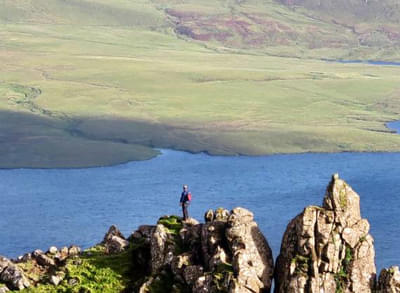About Basilica Cistern
Hidden beneath Istanbul's historic streets, the Basilica Cistern is a relic of the Byzantine era. It was constructed in the 6th century by Emperor Justinian I, and is the largest underground Cistern in the city. Known locally as 'Yerebatan Sarayı' or 'Sunken Palace,' it is famed for its capacity to hold an impressive 80,000 cubic meters of water. The vast underground space, supported by 336 marble columns, is a testament to ancient engineering brilliance. Located near Hagia Sophia and the Blue Mosque, it forms a historical nexus that captures the grandeur of what was once Constantinople.
The Cistern is more than just an architectural marvel, and is steeped in history and mystery. Among its rows of columns are two carved heads of Medusa, placed upside down. These features, atmospheric lighting and the soft sound of water, create a mesmerizing ambience that draws visitors worldwide. Today, the Basilica Cistern stands as a bridge between the past and present. It is a cool, quiet place away from the city's hustle and an essential stop for anyone exploring Istanbul's rich history.
Basilica Cistern Highlights
• Discover the Basilica Cistern, Istanbul's largest ancient underground water reservoir, showcasing Byzantine architectural genius.
• Marvel at the massive scale and 336 towering columns, each intricately carved, supporting the Cistern's expansive roof.
• Spot the famous inverted Medusa heads, a mysterious and iconic feature derived from ancient myths.
• Feel the serene tranquillity beneath bustling Istanbul as you explore this awe-inspiring underground marvel.
• Learn about the Cistern's engineering, designed to store and filter water for Constantinople's Great Palace.
How To Reach Basilica Cistern
1. By Road: Basilica Cistern is located 4.6 kilometres from the Taksim Square area in Istanbul's city centre. It is situated at Yerebatan Cad. Alemdar Mah. 1/3 34410 Sultanahmet-Fatih, Istanbul, Turkey.
2. By Bus: You can easily avail a bus ride on buses 28, 30D, 46C, 54E, 66, 77A, 92C, 99A or EM1. Get off at the Eminonu- Iskelesi- Yesilkoy Yonu bus stop, located around 1.6 kilometres or a 5 to 7-minute walk from Basilica Cistern.
3. By Car: If you are driving, you can reach the Cistern from the city centre via Meclis-i Mebusan Cd. This 4.6-kilometre journey will take 25 to 40 minutes. Upon reaching, you can park your vehicle in designated parking spots at Dalbasti Parking, Ispark 540, and Kabasakal Medrese Onu.
4. By Tram: You can take the T1 tram from Aksaray to the Sultanahmet tram station. The station is less than 100 metres or a 1-minute walk from the Cistern.
5. By Train: There are no direct trains to the Basilica Cistern. However, you can take the B1 Marmaray train from Atakoy to Pendik or the Marmaray train from Halkali to Gebze. Either way, get down at the Marmaray Sirkeci Station. It is located 1.1 kilometres or a 10-minute walk from the Cistern.
6. By Metro: Take the M2 metro to the Marmaray Sirkeci Station, located 750 metres, or a 10-minute walk away from the Cistern.
7. On Foot: If you are in the Sultanahmet area, the Basilica Cistern is just 100 metres away and is easily accessible on foot.
Best Time To Visit Basilica Cistern
Basilica Cistern is perfect to visit any time of year. This underground marvel offers a cool escape from Istanbul's streets.
1. Best Season: Visit during spring (March to May) or autumn (September to November). These months offer mild temperatures, perfect for comfortably exploring the Cistern.
2. Best Day of the Week: Aim for a visit between Monday and Thursday. Weekday visits ensure a quieter experience, allowing you to appreciate the Cistern's mystique without the hustle of weekend crowds.
3. Best Time of the Day: Early mornings or late afternoons are ideal for visiting the Basilica Cistern. The Cistern opens at 09:00 a.m., and arriving during this time can help you avoid the midday rush, making your visit more serene and personal.
You can also visit: Istanbul Tour Packages
Basilica Cistern Other Essential Information
- Wear sturdy, closed-toe shoes to walk on the slippery cistern floor safely.
- Carry a light cardigan or jacket to remain comfortable while exploring the cold underground Cistern.
- Exercise caution while descending the approximately 52 stairs leading to the colonnades below.
- Consider booking guided tours for a structured exploration and deeper historical insights.
- Secure your tickets in advance or arrive promptly to bypass potential long queues.
- Preserve memories using your mobile phone camera, and leave bulky tripods behind.
Marvel at the Medusa Heads
Venture to the northwest corner of the Basilica Cistern to see the famous Medusa heads. These two ancient sculptures are set at the base of columns, one placed sideways and the other upside-down. This unusual positioning adds mystery to their origin and purpose. Explore this eerie yet fascinating sight and ponder the legends surrounding these mythical figures. Historians speculate that these heads were repurposed from Roman ruins, possibly to ward off evil spirits, integrating myth into the architecture.
Also visit: Turkey Tour Packages
Walk Among the Marble Columns
Stroll through the cluster of 336 marble columns, each standing nine meters tall. These grand pillars support the roof of the Cistern and are beautifully spaced across the subterranean waters. As you wander, notice the different styles—Ionic, Corinthian, and Doric—that echo the Cistern's historical and architectural significance. Feel the cool air and listen to the soft echoes of dripping water, enhancing the atmospheric setting. Each column, carved from various types of marble, showcases the rich resources and skilled artisanship of the Byzantine era.
Discover the Hen's Eye Column
Find the column engraved with the Hen's Eye, complete with tears and slanted branches, a touching tribute to the thousands of slaves who perished during the Cistern's construction. This column not only tells a story of sorrow but also showcases the intricate craftsmanship of the Byzantine era. Touch the carvings, feel the history, and reflect on the human cost of ancient engineering marvels. The symbolism of the Hen's Eye, associated with vigilance and nurturing, adds a layer of depth to this memorial.
Tourism Board Alliances
Basilica Cistern FAQs
What was the Basilica Cistern used for?
What attractions are near Basilica Cistern?
1. Hagia Sophia
Located 150 miles southwest of the cistern, Hagia Sophia was the principal church of the Byzantine Empire, which was later converted into a mosque during the Ottoman Empire. The Government of Turkey has now converted it into a museum that attracts thousands of tourists.
2. Blue Mosque
The ethereal architecture and intricate interiors of the Blue Mosque is a sight to behold. It gets its name from the stunning blue Iznik tiles used in the mosque. A pinnacle of the Ottoman Empire, the mosque is open for tourists during a limited time.
3. Sultanahmet Square
Sultanahmet Square resides in the heart of the city, with many tourist spots around it. The square is brimming with locals and tourists alike, enjoying the pleasant weather and vibrant stuff sold by vendors. Don’t miss out on the German Fountain located in the centre of the square.
How old is the Basilica Cistern?
What are the different Turkey tour packages offered from cities across India?
Here are the different Turkey tour packages offered from cities across India
Basilica Cistern Reviews






